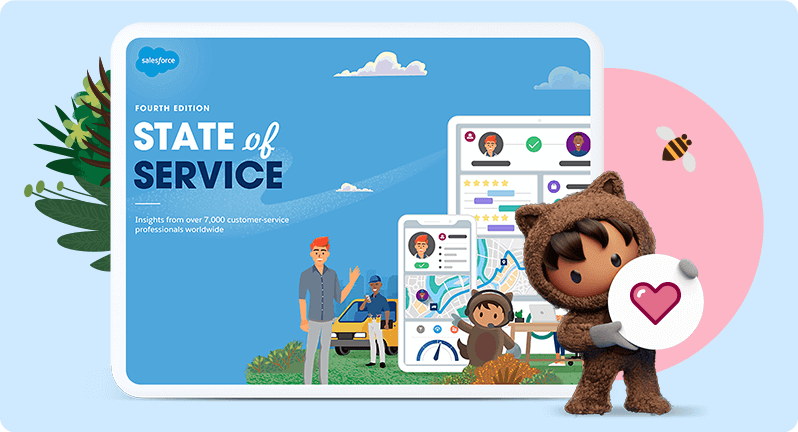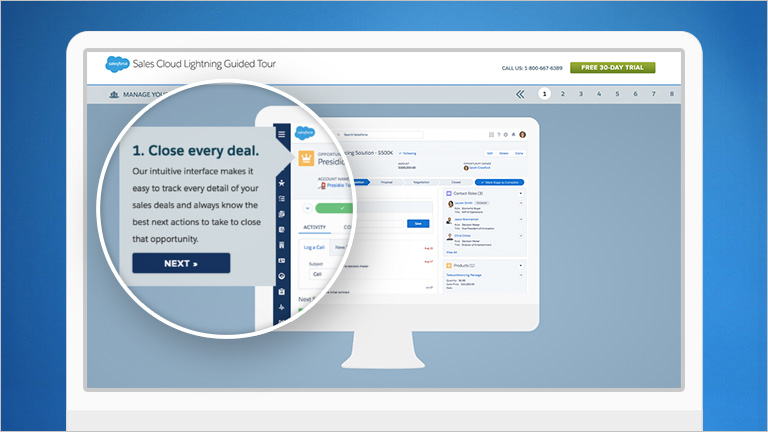How can you help your customer services team meet rising customer expectations? Here are seven customer service principles to help you level up your helpdesk operations.
Let’s face it, customer expectations have never been higher. While having a quality product is still critical, customer experience is now the competitive differentiator.
That’s why growing businesses in South Africa must empower their employees with the tools they need to deliver intelligent, connected customer experiences. In fact, 78% of service decision-makers in South Africa have already invested in new service technology since the pandemic to help realise this goal.
The truth is that service support isn’t a cost centre anymore – it’s an opportunity to build lifelong customer trust and drive growth.
To help you get customer service right, here are seven principles every growing business needs to take.
1. Tackle service as a team
Customer service isn’t something your employees should tackle alone – it’s a team sport. To deliver truly connected customer experiences, every employee should have a single 360-degree view of the customer’s previous interactions with your company.
It means that when things get busy, almost any employee can access the insights and customer context they need to pitch in and deliver quality experiences quickly. And with all the information they need in one place, keeping everyone aligned around the customer becomes seamless.
Not only is this great news for your customers, but it can be a rewarding experience for your employees too.
77% of businesses in South Africa now track the employee experience as a key service KPI.

2. Pool customer feedback
The more you learn about your customers and their expectations, the better you can meet them. Encourage employees to be inquisitive and equip them with a single, shared platform that pools knowledge for everyone to use.
What’s more, you can use that insight to help deliver more personalised services, such as contextual recommendations. Or even go one step further and use it to help automate routine admin tasks and inform chatbot responses – saving your service team time to focus on more complex cases.
By sharing all customer interactions on a single platform, you can join the 77% of service agents in South Africa who say they can remotely access all the data and information they need.
3. Appreciate the human touch
Did you know that 82% of customers expect complex problems to be solved by talking to a single agent? While automated chatbots can help you stay responsive and solve simple queries, it’s not always an appropriate solution.
When customers are anxious, frustrated, or faced with a complex issue, chances are they want to speak to a human who knows what they’re doing. So remember, it always pays to recognise when a case needs the human touch.
Who is getting customer service right?
Mont Blanc Financial Services is one of South Africa’s largest independent insurance brokers – and a completely digital business.
Because its customers generally only get in touch when they’re experiencing financial loss, its support team must have the visibility and insight needed to provide a personalised, empathetic, and hassle-free experience.
That’s why Mont Blanc chose Salesforce as its CRM provider. Agents now have a single dashboard view of all the customer data they need to deliver fast, relevant, and personalised interactions.
Mont Blanc also uses Salesforce to enable remote productivity, train agents on the latest updates collaboratively, and automate routine back-end operations.
4. Be open about your limitations
Your service team is only human, and they won’t always have the answer right away. And that’s OK.
But that doesn’t mean you should leave customers hanging. Instead, maintain an open dialogue and keep them informed of any updates to their case. Or better yet, introduce a helpdesk tool that can identify and assign the right cases to an agent with the right skills.
This transparency helps increase agent efficiency, and more importantly, ensures customer time is never wasted.
The first contact resolution rate KPI is a critical metric to measure – in fact, 69% of service teams in South Africa track it.
69% of service teams in South Africa track the first contact resolution rate as a KPI.

5. Practice empathy
The power of empathetic interactions can’t be overstated. After all, your customers likely only contact your service team when they’re anxious for a solution – or even angry.
If your agents put themselves in your customer’s shoes and remain patient, their empathy will naturally show. And chances are, customers will respond in kind.
Who else is getting service right?
SEACOM was responsible for laying the first subsea cable system in Africa. Since then, it has grown into one of the region’s largest telco service providers.
When diversifying into selling enterprise technology solutions in South Africa, it realised it needed a cloud-based platform to help handle its customer journeys.
SEACOM now uses Salesforce to provide employees with a single data-driven view, helping them automate routine admin tasks, better personalise the customer experience – and reduce customer onboarding times from 21 days to three.
The Fourth Edition of the State of Service Report
What do 7,000+ service professionals across 33 countries have to say about the strategic role of customer service today?

6. Know your products
You might be thinking, “pfft, well, obviously.” But if your service team isn’t working closely with your product team, or even sales and marketing, chances are there are blind spots in their product knowledge.
Make product training a mandatory part of your customer service operations. For example, you can onboard new employees through a product bootcamp, and provide bite-sized training for every new product release to keep their knowledge sharp.
7. Remember, every second counts
Customers hate to wait. In our fourth edition of the State of Service report, 83% of customers said they expect to interact with someone immediately when they contact a company.
So, give your service team the helpdesk software they need to personalise the customer experience as efficiently as possible. This all ties back to that 360-degree customer view we mentioned earlier.
With all relevant customer information stored and updated in one place, you can make life much simpler for your agents – driving employee satisfaction while ensuring every customer gets a fast and efficient resolution.
Ready to enhance service support and deliver next-level customer experiences? Take the Salesforce Service Cloud Guided Tour to learn how to connect every interaction and build the kind of end-to-end experiences that drive loyalty, employee efficiency, and competitive growth.
Salesforce Service Cloud Lighting Guided Tour
Learn how to connect every interaction and build the kind of experiences that drive loyalty, trust, and growth.

























